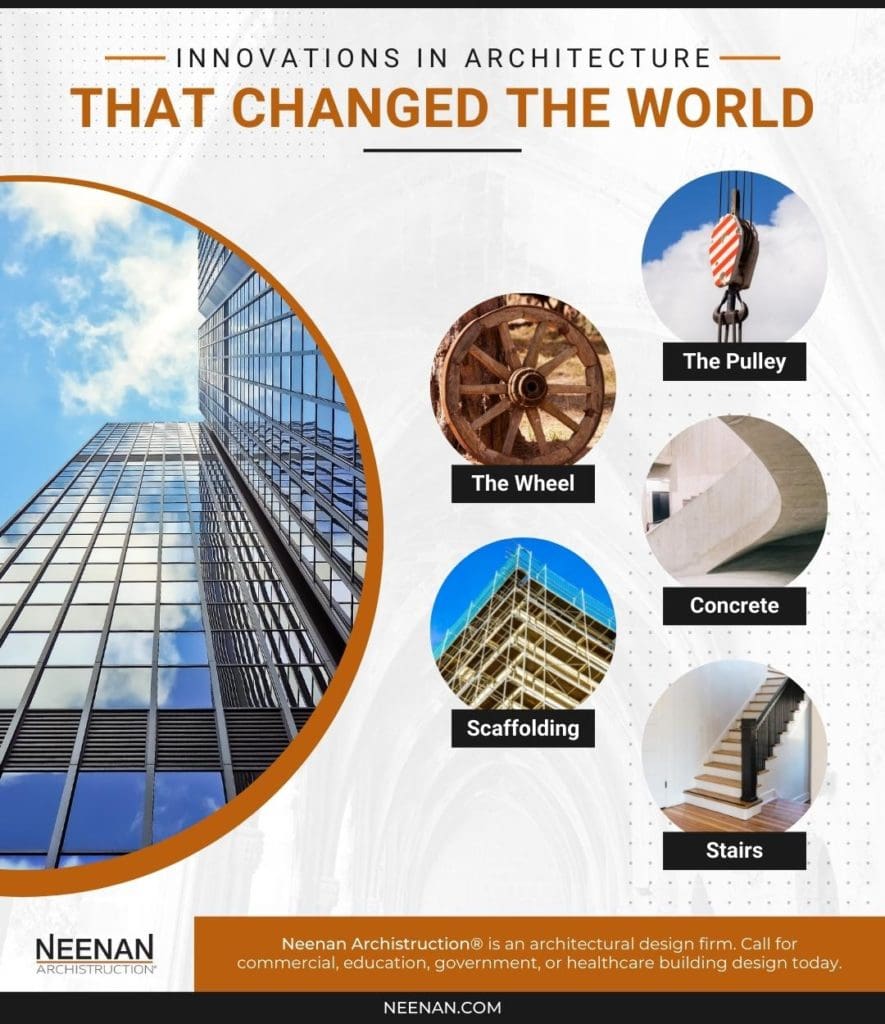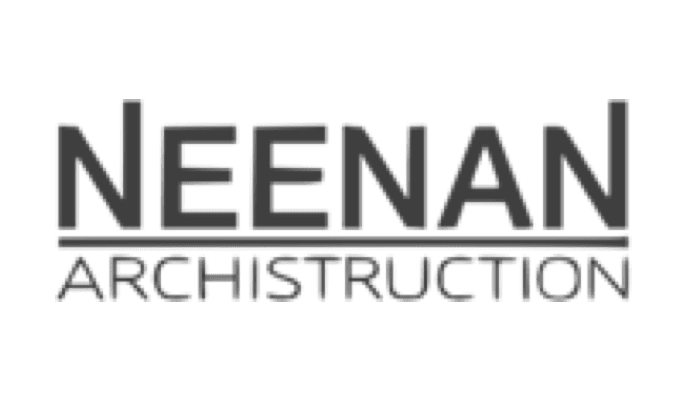One of humans’ basic needs is shelter. As society has progressed, so, too, has our buildings and architecture. Neenan Archistruction® is a building design and construction firm based in Fort Collins, and offers the best commercial, education, government, and healthcare building designs nationwide. We offer a Collaborative Design Process that ensures your commercial construction project follows your vision to a T. Below, we’ll go over some of the top innovations in architecture that have changed the world. Contact us for a free estimate today!

Ancient Egyptians were using an early pulley around 1800 BC to haul water out of the Nile River to their fields (called shaduf). We know that the Sumerians were using pulleys in 1500 BC, and that the first compound pulleys were invented by Archimedes of Syracuse around 250 BC. Pulleys are considered simple machines that use a block and tackle and a rope and take advantage of the principle of mechanical advantage in order to generate a larger force than we ourselves can generate. Without the pulley, it’s safe to say we’d all still be living in small huts, and the giants of architectural achievements would not be giant in size at all.
Did you know that the Ancient Pyramid of Giza was built using no wheels? Can you imagine what would have been built had there been wheels? The wheel was not invented until sometime in the 4000s BC in Mesopotamia. Here, the Sumerians inserted rotating axles into solid discs of wood. The wheel underwent innovations that made it much lighter, but not until 2000 BC. Now, wheels were used in chariots and carts for transportation, as well as in agriculture and crafts, which made life easier and processes much faster. Today, wheels are all around you, and if you can imagine a world where cars, bikes, and carriages don’t exist, that’s where we would be without the wheel. In architecture, the wheel changed transport, which allowed building materials of all different types to be transported to building sites easily, shortening the length of time it took to build a structure and allowing for more robust structures, too.
Contrary to popular belief, the Romans were not the first to invent concrete; they were the first to perfect concrete (a recipe that we to this day cannot replicate) and use it as their primary building material beginning around 600 BC. Instead, concrete dates back to 6500 BC in Syria and Jordan. Mortar, an early form of concrete, was used in The Great Pyramids of Giza around 3000 BC. Modern concrete called Portland cement was invented in 1824, and we saw the first reinforced concrete in 1849. It’s safe to say that concrete has revolutionized architecture. All you have to do is look around you, and you’ll see cement in almost every modern building, not to mention in most other building structures, like roads and bridges.
Scaffolding is the temporary structures you see around buildings that aid in construction, maintenance, and repair of buildings. Surprisingly enough, archaeologists believe scaffolding has been around since the dawn of early man, with cave paintings dated around 17,000 years old in France showing an early sort of scaffolding system. Some sort of scaffolding system was believed to have been used to build The Great Pyramids of Giza around 2500 BC, and scaffolding systems were around in ancient Greece and China. The first scaffolding was made with wood, with modern scaffolding being made primarily from metal. Without scaffolding, tall buildings cannot be built.
Stairs are structures that climb a large vertical distance in increments. It’s hard to say who invented stairs since they were believed to have been around since early humans. They were probably just a log or flat rock to step on to reach a home or cave. There is archaeological evidence of the first stairs as we know them dating back 4000 years. The Bible records the Tower of Babel as an attempt to reach God using stairs. The spiral staircase was born out of functionality and defense needs. These were hugely popular in medieval times in castles and were designed to be narrow and clockwise. This would be a disadvantage to right-handed swordsmen climbing the stairs, and being narrow, only one knight could climb at a time. And can you imagine a world without the Spanish Steps in Rome, arguably the most famous and beautiful steps invented? It’s safe to say that without stairs, buildings would forever be one-story high.
The invention of the elevator was inspired by stairs, and the earliest is believed to have been the brainchild of Archimedes around 236 BC. The Roman Colosseum had 25 elevators to raise animals up to the gladiatorial floor. These early elevators were powered by animals, wheels, and people. Once the Industrial Revolution hit, elevators embraced the newer technology and began to be powered by steam in the early 19th century. However, a more important invention that leap-frogged the development of skyscrapers was the elevator brake, invented in 1853 which stopped elevators from crashing and braking. As you know, skyscrapers around the world are some of the most beautiful architectural delights known to humans.
We here at Neenan Archistruction® love to embrace the old and incorporate the new in our building design and construction process. We specialize in the construction of commercial, education, government, and healthcare buildings. Our mission is to give our customers a unique building that functions and flows, meaning it’s design is one to admire and enjoy. No matter where you are in your building project, if you are just getting started with an idea or you are near the construction phase, we can help.
Neenan Archistruction® is a full-service commercial construction company, offering building design and project management. Our team can help you find a building site, assess the site’s building condition, create a design and budget for you, and even help you find sources of capital for funding. We believe in partnering fully with our customers, making the building design and construction process easy for you. We embrace our Collaborative Design Process where we keep you in the loop every step of the way, asking for input with every design and construction process. In addition, we use target costing to keep your building within budget. Every service we offer is aimed to ensure 100% customer satisfaction.
If you are ready to begin, reach out to our team today!
